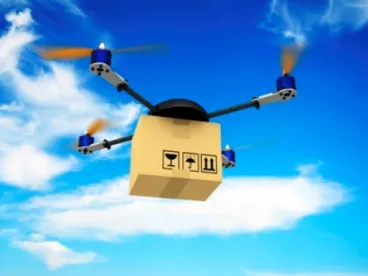New legislation signed by the President will not only provide funding for the Federal Aviation Administration (FAA) for the upcoming fiscal year, it also will lead to a number of substantive changes to the rules governing small unmanned aircraft systems (“UAS”). These UAS –frequently referred to as drones – are used for commercial activities such as aerial newsgathering and photography and inspections of critical infrastructure, and are expected to be used for a broader array of operations, including package deliveries. Many hope that the new law will push the FAA to move more quickly towards integrating UAS into national airspace, something that industry has sought for nearly a decade.
Among the important new directives to the FAA are:
UAS Traffic Management: The FAA will be required to test new traffic management systems and to deploy these capabilities as they come online, rather than waiting for a complete system to be ready. This will speed the process of integration of UAS into the airspace, and will allow for a gradual increase in the range of permitted operations (and the decrease in logistical hassles involved in those operations) over time, rather than retaining the status quo, which limits the areas and distances in which UAS may fly.
Remote ID: Congress directed the FAA to create a pilot program to test remote identification technologies for UAS. Remote ID will allow the FAA, law enforcement, etc., to identify the pilot or operator of a UAS that is not flying in accordance with regulations. Access to this information is cited as extremely important for national security, and it a major hurdle to complete integration of UAS into airspace. (Presently, UAS may only be flown in certain airspace, generally away from airports and other protected facilities or areas.)
Additional Waiver Authority: Congress provided the FAA with authority to issue blanket waivers (as opposed to case-by-case waivers) outside the rulemaking context insofar as the FAA determines that certain operations can be conducted safely. This provision should greatly aid industry in speeding up the process of getting permission for operations presently prohibited, or functionally prohibited because of the expense and logistical difficulty involved in the FAA’s individualized waiver process.
Spectrum: The legislation also required the FAA to prepare a report on spectrum issues related to UAS operations, including the potential use of protected aeronautical mobile spectrum to control the UAS.
Support for Existing Programs: The legislation codified a number of existing FAA programs that provide for UAS test ranges, the UAS Integration Pilot Program, and Arctic operations zones, into statute.
Equipment Certification and Standards: The FAA was directed to begin creating and adopting safety standards for UAS, using risk- and performance-based analyses, and including a self-certification process for equipment much like that employed by the Federal Communications Commission for certain types of devices.
Tethered UAS: Congress made a distinction between free-flying UAS and tethered UAS, allowing the FAA to craft more permissive rules for some tethered operations. This will assist commercial users seeking to operate in situations where they are currently barred, such as flights over people or in no-fly zones, as the existence of the tether will provide the FAA with more assurance that such flights will not pose a safety threat.
Drone Deliveries: The FAA was directed to make new rules governing the carriage of property using UAS, opening the door for much-anticipated “drone deliveries” sought by industry for many years.
Authority over “Hobbyist” UAS: Congress repealed previous restrictions on the FAA’s authority to regulate ‘hobbyist’ operations. “Hobbyist,” or recreational flights, essentially are conducted purely for recreational purposes, rather than for commercial purposes, by law enforcement, etc. The FAA may now impose regulations on all small UAS, whether flown for recreational or other purposes. Recreational pilots will be required to obtain an FAA license, though the legislation contemplates that this can be accomplished via an online-only system. This is a change that the UAS industry has sought for some time, as it will allow the FAA to impose more comprehensive rules for all UAS in U.S. airspace, which many hope will lead to complete UAS integration.
Responding to Terrorism Threats: In response to a long-held national security concern regarding the proliferation of UAS in U.S. airspace, the legislation provided authority to the Departments of Homeland Security and Justice to take action in real-time to stop threats of terrorism. It additionally required that the agencies make clear public disclosures of “no fly” areas. While granting federal authority to take down UAS believed to be security threats may be a concern to commercial pilots operating near protected facilities, the public disclosure requirement may make it easier for pilots to avoid such a situation.




 />i
/>i
